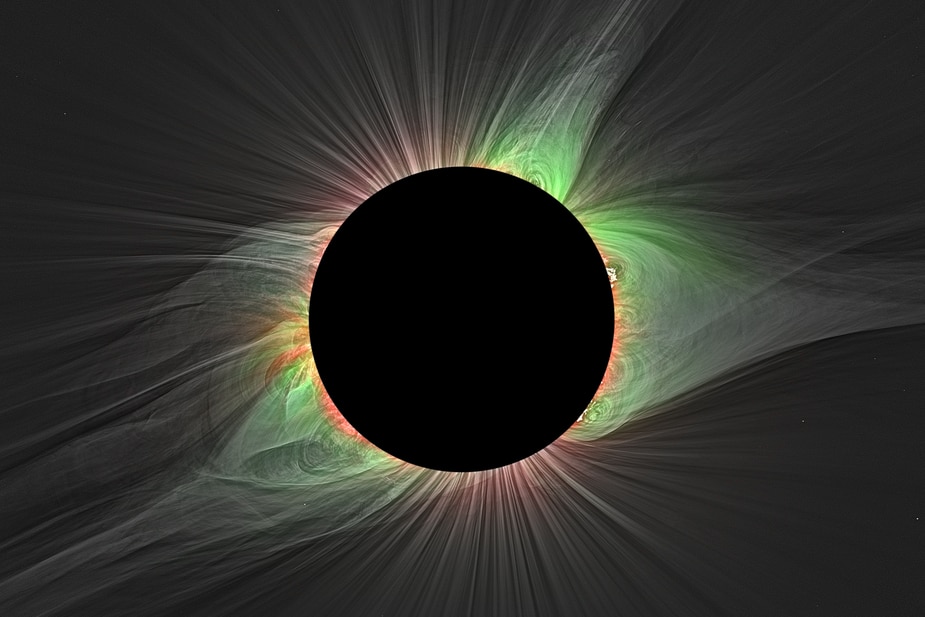Create a free profile to get unlimited access to exclusive videos, sweepstakes, and more!
NASA reveals dark secrets of the Sun during total solar eclipse

When the Sun goes dark, there is one part of it that shines brighter than everything else — the corona. The outer atmosphere of our star has literally shed light on many mysteries and continues to hide many more in plain sight.
While traveling to some of the most distant and remote places in the world to observe the corona during a total solar eclipse, a research team led by Shadia Habbal of the University of Hawaii found that something was off. The temperature from regions where solar wind originates does not change throughout a solar cycle, even though temperatures of magnetized plasma that create structures within the corona can be erratic.
Benjamin Boe, a researcher on Habbal’s team who coauthored a study recently published in Astrophysical Journal Letters, found several unexpected things in 14 years’ worth of hi-res solar eclipse images.
“The most surprising thing to me is the number of fine-scale structures that we have been able to see in the corona,” Boe tells SYFY WIRE. “These hint that much of the corona is not closed, but actually open magnetic field lines which extend into space. Our work points to missing components and incorrect assumptions in the models that need to be addressed.”
Most previous models assumed that the majority of field lines around the sun are closed. Because the sun is essentially a gigantic orb of plasma floating in space, it behaves like any other gas. Because different parts of it rotate out of sync, its magnetic field becomes warped, and some regions are twisted enough to belch out solar storms. Solar wind is propelled through space by phenomena such as flares and coronal mass ejections. It can seriously mess with the power grid on Earth, screw up satellites, and be a hazard to astronauts on the ISS.
The researchers figured out the temperature of areas that give rise to solar wind when they studied two types of iron ions that commonly occur in the corona. They saw that more relatively cool particles (if you can call anything on the Sun cool) made up the solar wind, and that these were almost unchanging during an 11-year solar cycle. They tend to zoom around at speeds from about 185-435 miles per second. Hotter particles still sneak into the solar wind, but are rarer and less predictable.
Boe believes the evidence means that whatever heats the corona and solar wind doesn’t really care much about cycles, since it appears to do whatever it wants.
“The fact that we found essentially the same ion was always dominant implies that the heating of the solar wind is somewhat insensitive to the solar cycle," he says. “However, there are other structures like prominences and active regions that do vary with the solar cycle and can release very high temperature plasma into the solar wind.”
Sometimes, these structures will throw off the solar wind, but not much of it. Solar prominences, or filaments, start at the surface of the Sun and stretch far into the corona, sometimes blazing hundreds of thousands of miles away. Active regions are seen as sunspots. These are areas where our star’s temperamental magnetic field is disrupted, setting off high-energy storms that are part of the reason why Mars, thought to have once been a potential hotbed of life, is a corpse of a planet.
A total eclipse of the Sun will occur about every year and a half. Sometimes even coronagraphs cannot make out how far the entire corona reaches into space, which is why Habbal’s team has depended on eclipses and observed them everywhere from Oregon to Mongolia to the Arctic. Visibility is usually clearest in areas without huge amounts of light pollution getting in the way. There is still no existing technology that gives scientists as accurate a view of the corona as an eclipse, during which the team imaged the Sun in white light and studied ions by looking into specific wavelengths.
“It is not totally clear why the heating process is behaving in such a consistent way,” Boe says. “Our goal is to provide robust observational context and constraints for future modeling efforts to use, which will then get at addressing the heating mechanisms.”
The next total solar eclipse will happen on Dec. 4 of this year, but you won’t be able to see it anywhere around here. Start booking your tickets to Antarctica now.


























